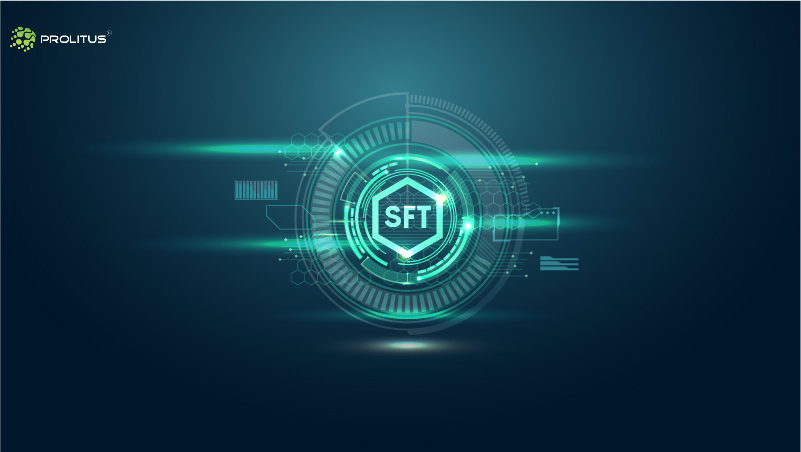The advent of blockchain technology has opened the doors to a new tech space that every sector is implementing. The journey started with fungible tokens, escalated to non-fungible tokens, and now stands at semi-fungible tokens.
As developed on the foundation of non-fungible tokens, SFTs allow swapping like a fungible token, but once it’s redeemed or traded, it becomes non-fungible. But before reading what semi-fungible tokens bring, let’s quickly review fungible and non-fungible tokens.
What are fungible tokens?
Fungible tokens are easily interchangeable or tradable on the crypto exchanges. Anyone can swap fungible tokens with other tokens without any drop in value. For example, Bitcoin is a fungible token that can be used to buy other cryptocurrencies on an exchange.
Fungible tokens do not have value distinctions, as one ETH on the XYZ exchange will equal one ETH on the ABC exchange. Fiat currencies also fall under the bracket of fungible tokens. Simply put, fungibility is the ability of a token to be exchanged with other tokens of the same type without any change in value.
What are non-fungible tokens?
Non-fungible tokens (NFTs) represent ownership of real-world items such as artwork, music, GIFs, real estate, etc. Since each item has a distinct value associated with it, you cannot exchange an NFT like a fungible token. For example, artwork from an artist cannot be exchanged 1:1 with a digital baseball card as both are completely different assets.
NFTs are stored on a blockchain and have distinct characteristics. An NFT is essential, an indestructible and immutable unit where you cannot change the underlying information once it is stored. However, they represent ownership and are verifiable as one can easily verify the authenticity at any time.
What are semi-fungible tokens?
Semi-fungible tokens (SFTs) are new types of tokens that can be fungible or non-fungible during their lifecycle. SFT starts its journey as a fungible token and becomes a non-fungible token. In short, after they have lived the life of a fungible token, they lose their value, making the expired tokens non-fungible.
For example, a token representing an entry to a baseball match would have the same value as another ticket and would therefore be interchangeable. SFT gets its name by transforming from a fungible to a non-fungible token upon redemption.
What is the difference between an NFT and an SFT?
The difference between an NFT and an SFT is that the latter lives two lives and becomes an NFT once it has been traded. As discussed above, an SFT first lives as a fungible token with some value (as discussed above), and after the redemption, it becomes non-fungible. In contrast, non-fungible tokens may or may not have value in the beginning.
How to create semi-fungible tokens?
Semi-fungible tokens can be minted using Ethereum’s ERC-1155 standard—a token standard that efficiently transfers non-fungible and fungible tokens in a single transaction.
Horizon Games, Enjin, and The Sandbox are the blockchain game developers credited with developing the ERC-1155 Ethereum standard. ERC-1155 is a combination of the ERC-20 (fungible token) and ERC-721 (non-fungible token) standards that makes it possible to create and manage both tokens using a single smart contract.
Semi-fungible tokens are used in the gaming industry where fungible (coins) and non-fungible elements (collectibles, weapons) exist. An in-game asset can start its journey as a fungible asset and grow as the player progresses.
For example, the Axies progress as you play the Axie Infinity game, but the progress is lost if you transfer the Axies to another address. A solution could be to make Axies as SFTs to retain the hard-earned levels even when traded.
What are the benefits of a semi-fungible token?
Semi-fungible tokens have an added advantage over the vulnerabilities of non-fungible tokens. They provide numerous benefits to the cryptic space, which are as follows:
- SFTs help to execute fast, quick, and affordable transactions. The ERC-1155 standard allows people to transfer more than one token simultaneously in a simple and efficient process.
- Users get an extra benefit from semi-fungible tokens because they can use both fungible and non-fungible tokens in the same transaction.
- SFTs protect the industry against accidental losses users can suffer while transferring non-fungible tokens. They enable the efficient transfer of any token without the fear of locking tokens in the contract.
- Semi-fungible tokens can be used in several ways because they are like single-use tickets that will transform into NFTs after use. SFTs can also verify a person’s age, identity, physical attributes, etc.
The Future
Semi-fungible tokens (SFTs) solve some of the critical issues of NFTs and can potentially be the next big revolution. Game developers use SFTs for in-game assets as they can now implement fungible and non-fungible tokens using a single smart contract.
Although SFTs have fewer followers in the ecosystem than fungible and non-fungible tokens, they can enormously impact future crypto and NFT markets. Hence, the existence of semi-fungible tokens will help boost the growth of the non-fungible token community and aid further industry development.
Launch your own SFT with Prolitus
Prolitus is a popular SFT token development platform that will cater to your business needs. The company offers end-to-end SFT token development services and legal compliance to help users use one smart contract for multiple assets. Prolitus has a team of experts with years of experience developing SFT tokens.
Please connect with one of our experts to discuss your semi-fungible token development requirements.
Frequently Asked Questions (FAQs)
How does a fungible token differ from a non-fungible token?
The difference between fungible and non-fungible tokens resides in the content they store. A non-fungible token stores data like a song or an artwork, while fungible tokens store value.
What are NFTs, and how are they different from crypto?
Non-fungible tokens (NFTs) are different from each other and have different values based on how valuable they are seen to be and how much demand there is for them.
What is a semi-fungible token?
Semi-fungible tokens (SFTs) are new types of tokens that can be fungible and non-fungible during their lifecycle.





